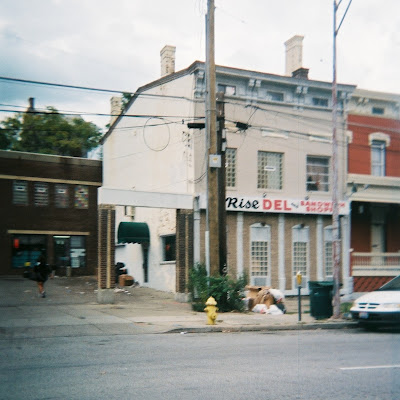Oversized bobby pins, first edition (in progress).
"When the real is no longer what it used to be, nostalgia assumes its full meaning. There is a proliferation of myths of origin and signs of reality; of second-hand truth, objectivity and authenticity. There is an escalation of the true, of the lived experience; a resurrection of the figurative where the object and substance have disappeared. And there is a panic-stricken production of the real and the referential, above and parallel to the panic of material production. This is how simulation appears in the phase that concerns us: a strategy of the real, neo-real and hyperreal, whose universal double is a strategy of deterrence.
These would be the successive phases of the image:
- It is the reflection of a basic reality.
- It masks and perverts a basic reality.
- It masks the absence of a basic reality.
- It bears no relation to any reality whatever: it is its own pure simulacrum.
There is no real, there is no imaginary except at a certain distance. What happens when
this distance, including that between the real and the imaginary, tends to abolish itself, to
be reabsorbed on behalf of the model? Well, from one order of simulacra to another, the
tendency is certainly toward the reabsorption of this distance, of this gap that leaves room
for an ideal or critical projection." -Jean Baudrillard
Hyperreal and Imaginary
"Disneyland is a perfect model of all the entangled orders of simulation. To begin with it is a play of illusions and phantasms: pirates, the frontier, future world, etc. This imaginary world is supposed to be what makes the operation successful. But, what draws the crowds is undoubtedly much more the social microcosm, the miniaturized and religious revelling in real America, in its delights and drawbacks. You park outside, queue up inside, and are totally abandoned at the exit. In this imaginary world the only phantasmagoria is in the inherent warmth and affection of the crowd, and in that aufficiently excessive number of gadgets used there to specifically maintain the multitudinous affect. The contrast with the absolute solitude of the parking lot — a veritable concentration camp — is total. Or rather: inside, a whole range of gadgets magnetize the crowd into direct flows; outside, solitude is directed onto a single gadget: the automobile. By an extraordinary coincidence (one that undoubtedly belongs to the peculiar enchantment of this universe), this deep-frozen infantile world happens to have been conceived and realized by a man who is himself now cryogenized; Walt Disney, who awaits his resurrection at minus 180 degrees centigrade.
The objective profile of the United States, then, may be traced throughout Disneyland, even down to the morphology of individuals and the crowd. All its values are exalted here, in miniature and comic-strip form. Embalmed and pactfied. Whence the possibility of an ideological analysis of Disneyland (L. Marin does it well in Utopies, jeux d'espaces): digest of the American way of life, panegyric to American values, idealized transposition of a contradictory reality. To be sure. But this conceals something else, and that "ideological" blanket exactly serves to cover over a third-order simulation: Disneyland is there to conceal the fact that it is the "real" country, all of "real" America, which is Disneyland (just as prisons are there to conceal the fact that it is the social in its entirety, in its banal omnipresence, which is carceral). Disneyland is presented as imaginary in order to make us believe that the rest is real, when in fact all of Los Angeles and the America surrounding it are no longer real, but of the order of the hyperreal and of simulation. It is no longer a question of a false representation of reality (ideology), but of concealing the fact that the real is no longer real, and thus of saving the reality principle.
The Disneyland imaginary is neither true nor false: it is a deterrence machine set up in order to rejuvenate in reverse the fiction of the real. Whence the debility, the infantile degeneration of this imaginary. It ~s meant to be an infantile world, in order to make us believe that the adults are elsewhere, in the "real" world, and to conceal the fact that real childishness is everywhere, particularly among those adults who go there to act the child in order to foster illusions of their real childishness.
Moreover, Disneyland is not the only one. Enchanted Village, Magic Mountain, Marine World: Los Angeles is encircled by these "imaginary stations" which feed reality, reality-energy, to a town whose mystery is precisely that it is nothing more than a network of endless, unreal circulation: a town of fabulous proportions, but without space or dimensions. As much as electrical and nuclear power stations, as much as film studios, this town, which is nothing more than an immense script and a perpetual motion picture, needs this old imaginary made up of childhood signals and faked phantasms for its sympathetic nervous system."
-Jean Baudrillard. Simulacra and Simulations, Jean Baudrillard, Selected Writings, Ed Mark Poster. Stanford University Press, 1998, Pages 166-184.


.jpg)
.JPG)
.JPG)
.JPG)

.JPG)
.JPG)
.JPG)






































































